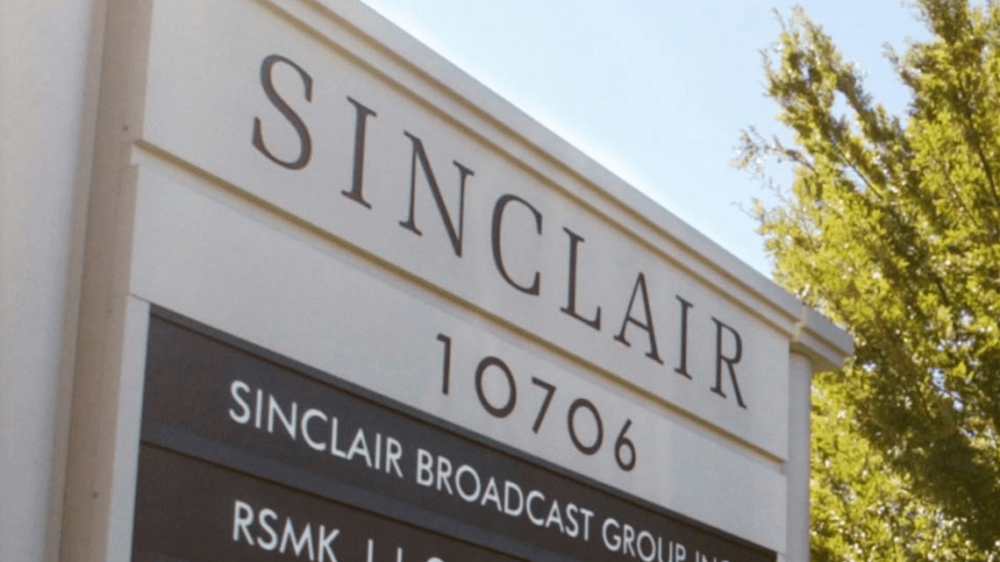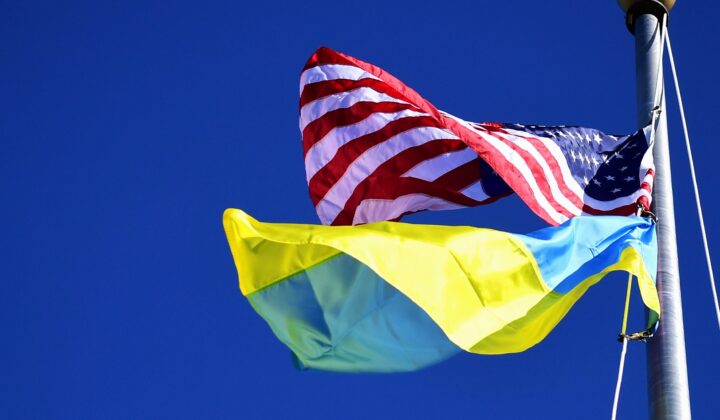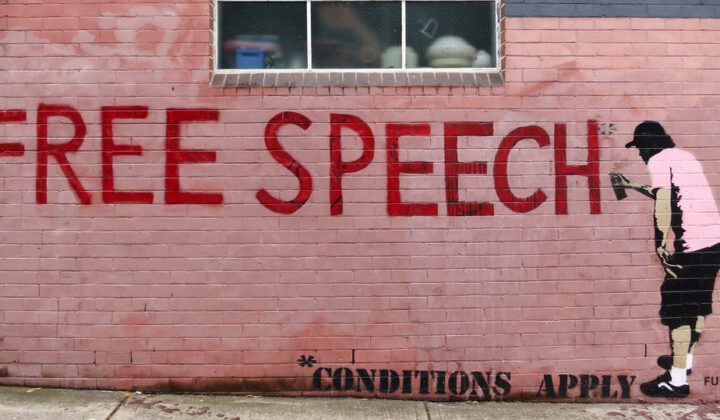Controversy Surrounds Sinclair Once Again
Over the past week, Sinclair Broadcast Group, the second-largest television station operator in the United States, has been subject to backlash over its planned airing of an interview with Judy Mikovitz. Mikovitz has propagated a conspiracy theory accusing Dr. Anthony Fauci of manufacturing the Covid-19 virus, and has made a number of other outlandish claims about the pandemic in the past. Pushback was so substantial that Sinclair tweeted on Monday its decision “not to air the interview,” and emphasized its “appreciation for all that Dr. Fauci and his team have accomplished.”
This controversy once again puts a spotlight on Sinclair, which has been the target of significant criticism in recent years. Earlier this year, the FCC fined the company a record-breaking $48 million over a lack of candor on anti-trust issues during its aborted attempt to acquire Tribune Media, a deal which would have given it television coverage in almost three quarters of households nationwide. In another high-profile debacle, a 2018 viral video showed dozens of local anchors airing a message decrying the “sharing of biased and false news.” The incident called attention to Sinclair’s policy of mandating local stations to air segments known as “must-runs,” including, at one point, a weekly political analysis program hosted by Boris Epshteyn, former senior advisor to Donald Trump’s presidential campaign.
Sinclair operates over 190 television stations, which cover 40% of American households and is often affiliated with networks such as Fox, ABC, CBS, and NBC.
- What are the implications of Sinclair’s influence for democracy?
First, Sinclair’s outsize influence on the American public has increasingly replaced independent reporting with biased must-run segments and partisan talking points. This reduces the quality and trustworthiness of news sources at a time when trust in the mainstream media nears historic lows. To be sure, since the end of 2019, Sinclair has moderated to a certain extent, limiting the influence of right-wing bias on its coverage. But given the company’s past links to the Trump administration, and its hiring of prominent conservative media personalities, significant questions remain as to its neutrality.
Most concerning, however, is Sinclair’s adverse influence on local journalism. The importance of local news coverage, now more than ever, cannot be understated – and the risks to its continued existence are undeniable. Since 2006, weekday circulation has nearly halved, newspaper workforces have fallen by 47%, and ad revenues have fallen by 66%. Over 65 million Americans live in near-news deserts, with access to one or fewer local papers. People are more reliant than ever on local television stations for their news.
But under Sinclair ownership, national coverage takes precedence over local coverage. A 2018 study on its acquisition of 14 stations found that a Sinclair acquisition leads to a 25 percent increase in national politics coverage and a 10 percent decrease in local politics coverage. These changes have very real impacts on our democracy: local news has the capacity to bring people together, something we sorely need at a time when national news does little more than polarize us.
- How can we solve this problem?
The rapid decline of high-quality local coverage, and the increase in concentration of media sources is deeply troubling, no matter where your political allegiances lie. One proposed solution is a return to the ‘Fairness Doctrine,’ an FCC policy, repealed in 1987, which mandated that radio and television broadcast-license holders devote airtime to the presentation of both sides of important public interest issues.
Though the policy sounds innocent, even benign, its reinstatement would likely cause more harm than good. At its core, the Fairness Doctrine faces the same challenge as all limitations on speech: who is the arbiter? Who decides? The answer: those in power. From JFK to Nixon, Democratic and Republican administrations alike consistently used and abused the doctrine to harass, intimidate, and silence broadcasters airing critical coverage.
If the Fairness Doctrine isn’t the solution to the Sinclair problem, what is? It starts with education and critical thinking. Instead of rote learning, which teaches us to accept everything we watch as fact, America’s education system must show students how to evaluate spurious claims, and expose them to points of view with which they disagree. Only by changing the way we learn can we change the way we consume media.
___

United States Post Office Delays Reported Amidst Financial Crisis
Reports of delays affecting USPS mail deliveries resurfaced this week after newly appointed Postmaster General Louis DeJoy directed controversial policy changes for the agency. The new policy indicates that mail carriers should leave excess mail behind when certain deliveries are outside designated routes to avoid overtime, reversing the longstanding practice of delivering all the mail every day regardless of scheduling difficulties. DeJoy – who, unlike most of his predecessors, has no prior postal experience – proposed these new cost-saving measures due to serious concerns that the agency will run out of money by the end of the year. USPS is close to insolvency after over a decade of financial troubles due to its congressionally-mandated pre-funding of employee pensions, as well as the cultural shift away from mail as a primary means of communication.
Secretary Mnuchin has withheld $10 billion in bailout money to USPS for their refusal to comply with their terms that would hand over much of the postal service to the Treasury Department. President Trump has consistently complained that the agency is offering its services at too low of a rate and suggested that the loan will only be granted on the condition that the agency increases the prices of those services.
As the pandemic continues to exacerbate the problems of USPS—thousands of mail carriers have fallen ill and many have died from the disease—many worry that the Trump administration will block all assistance to the agency in order to draw skepticism over their ability to handle mail-in ballots in November.
- Is USPS a business or a service?
The founding fathers designated the USPS as a service to the American public, not as a for-profit business. Along with the financial pressure of accepting the terms of the much-needed $10 billion loan, DeJoy has been pushing the USPS to act more like a business than a service. He is likely open to the President’s demands to increase the costs of shipping for companies like Amazon by upwards of 400%. President Trump argues that these hikes are necessary to offset the USPS’s debt, despite the fact that the USPS already profits off of its deals with Amazon and other such companies.
While it’s true that modest increases in shipping costs could make up some revenue loss for the USPS, increases of the magnitude Trump demands would likely only serve to benefit the USPS’s private competition, like UPS and FedEx. DeJoy’s wife and President Trump’s current nominee for Ambassador to Canada, Aldona Wos, is positioned to benefit immensely from such a shift; she owns between $30.1 million and $75.3 million in USPS competitors like UPS. Taken together, the pressures of the $10 billion loan terms, DeJoy’s sympathies with Trump’s demands, and the financial gains DeJoy’s family is positioned to receive for giving into those demands, sets the USPS up for politically and financially motivated—as opposed to service-minded— questions.
- Why do we need the postal service when we have UPS and FedEx?
The postal service plays a unique and vital role in our country. The need for a federal postal service was enshrined in the Constitution with the purpose of binding the nation together through “communication and commerce.” While many like to argue that the USPS is a relic of the past, voting by mail certainly isn’t; without the USPS, ballots would be in the hands of private corporations. It’s important to recognize that the President’s attempts to hollow out the postal service also contribute to his aim of delegitimizing mail-in-voting. As a result, we must be particularly vigilant about how DeJoy fulfills his duty to properly oversee mail-in voting in November. USPS is already recommending that voters request their ballots at least 15 days ahead of the election.
Even with the advent of email and smartphones, the agency plays a critical role in delivering census materials, medicine, and ballots to citizens across the country, not to mention a majority of packages and letters we receive in the mail. These services are particularly essential for remote communities across the US, since there may not be enough financial incentive to serve them.

Automatic Voter Registration Passes in New York as the National Trend Continues
On July 24, New York lawmakers passed historic legislation that would establish automatic voter registration (AVR) beginning in the start of 2023. AVR flips voter registration from an opt-in to an opt-out system, allowing individuals who visit various state agencies such as the DMV to register them as voters unless they affirmatively decline. Automatic voter registration (AVR) began in Oregon in 2016. Once the state enabled AVR policies, they saw registration rates triple. California – with an estimated 6.6 million unregistered voters – quickly followed suit. Many other states have also seen the positive outcomes of AVR.
Not only does AVR save money that would have gone towards paper forms and hosting registration drives, but it helps clean up the voter rolls. This reduces the odds of mistakes and errors caused by processing paper registration forms by hand. To date, 19 states and the District of Columbia have passed an AVR bill into law, including New Jersey, Georgia, Massachusetts, and Maryland.
- Why is AVR important?
Relative to other democracies, America suffers from incredibly low voter turnout, with a significant percentage of the population alienated from the political process. The hope is that AVR will give the disenfranchised and disinterested an easier route towards fulfilling their civic duty and getting involved in our democracy. The evidence so far indicates that AVR provides a moderate boost to turnout on Election Day. Overall, individuals in states implementing AVR are one percentage point more likely to vote. But importantly, young people (18-24 year olds) and low-income groups in AVR states are 6.3% and 4.0%, respectively, more likely to turn up at the voting booth. There is a clear and positive pattern of increased participation in our democracy in states with AVR, a pattern that we can assume will continue as AVR becomes the norm nationwide.
- Are there other measures or legislative efforts to maximize turnout?
AVR has only been one of a few responses to increasing voter turnout. In April, Virginia Governor Ralph Northam signed off on legislation that would make Election Day a statewide holiday (joining New York, Hawaii, and Kentucky), and there have been calls to make Election Day a national holiday. The concept of same-day registration has also been implemented in 21 states and the District of Columbia, but may be harder to implement during this election cycle due to the coronavirus pandemic. Each of these measures represent important efforts to involve citizens in the most important civic duty they have: voting.





